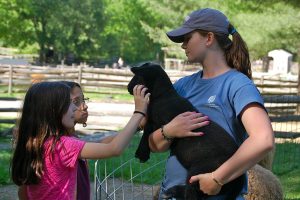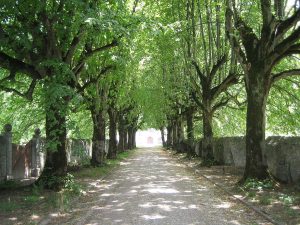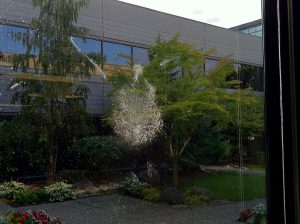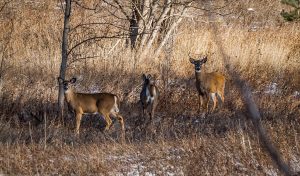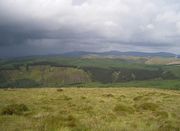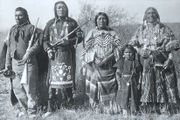Raptor Nests on Power Poles
Raptor use of power-line structures has been documented globally for activities such as nesting, roosting, hunting, feeding and establishing territorial boundaries. This creates challenges and opportunities. One challenge is that electrocution of birds on power-line structures is thought to be a cause of decline in raptor populations in some areas, including in populations of threatened species.
Marine Aquaria & Zoological Gardens
Captive animals in zoos and aquariums are taken form their original habitat they rely on, and then are put into an artificial environment, which are considered to be suitable for them to live in by human beings. This happens all around the world, because the huge profit brought by numerous tourists in zoos and aquariums, and for the sake of education. In fact, the earliest zoo was discovered in Egypt in 35th century BC, when the largest Egypt urban centre was built.
How Street Trees Can Save Our Cities
Cities around the world are looking for ways to improve the livability of their cities and street trees are a common and important remedy for urban planning departments. The initial appeal of street trees is the beauty they can bring to an area that could be devoid of non-concrete materials. However, street trees can also serve a community beyond the aesthetics of greenery within an urban space, as agents of more practical contributions to the health of the city.
Urban Architecture To Aid Bird Conservation
Bird species conservation in urban ecosystems urban landscapes is a potent issue with the exponential increase of the human population and the expanding urban settlements being built around the world. Naturally, countries with higher development rates have larger numbers of high-rise buildings and establishments that result in urban problems for birds. Moreover, this issue is more pertinent in the metropolitan cities that are densely populated and have advanced infrastructure that interferes with the flying patterns of birds.
Urban Deer Feeding in BC
Through this wiki page, examinations of possible outcomes of feeding urban deer in Central/Western British Columbia are performed. Possible outcomes include: An increase in deer/related automobile crashes, an increase in poaching, the spread of disease, especially Chronic Wasting Disease, change in deer eating habitats, which may result in unhealthy trends, and ecological effects that result from deer changing a primary food source.
Insistence on Cosmetically Perfect Fruits & Vegetables
Cosmetically Perfect Fruits and Vegetables meet aesthetic standards of size, shape, and are free of physical blemishes. Produce that does not meet these standards is often thrown away, and can be classified as either food loss or food waste. Food loss is defined as the edible food that is lost throughout production, postharvest, and processing, whereas food waste refers to edible food lost at the end of the food chain due to behaviour of retailers and consumers.
Octopus Fishery Management in Madagascar
Madagascar is credited with being amongst some of the largest islands in the world and is located just southeast of Africa in the Indian Ocean. It is an island with incredible biodiversity, and unsurprisingly, the fisheries in Madagascar are a big contributor to Madagascar’s economy. Octopus fishery management in Madagascar provides relevant evidence of the economic benefits of local fisheries management and their ability to promote community engagement in broader marine management.
The Re-Wilding Movement in the Heart of Wales
The Cambrian Mountains, once a striving natural land, has been overwhelmed by harsh agricultural practices which triggered a shift in native vegetation as well as habitat loss. Located in the heart of Wales, the Cambrian Mountains is home to farmers who raise sheep, a traditional source of protein and wool, through grazing practices that have left the land barren of natural vegetation. As George Monbiot describes it, the Cambrian Mountains have been reduced to a desert to support agricultural practices that are of small influence. This unprecedented shift in vegetation and habitat loss has gained the attention of the Welsh government and non-government organizations to collectively work with farmers in creating a sustainable management plan to revitalize the Cambrian Mountains.
The Opposition of the Standing Rock Sioux to the North Dakota Oil Pipeline
The Dakota Access Pipeline (commonly referred to as DAPL) runs for 1,172 miles, starting in the Bakken and Three Forks Formations and continuing Southeast through South Dakota and Iowa, ending in the Gulf Coast Refineries in Pakota, Illinois. The Bakken and Three Forks Formations, the point where Saskatchewan, Manitoba, North Dakota and Montana meet, have an estimated 7.4 billion barrels of oil and 0.53 billion barrels of natural gas trapped underground. In addition to crossing over four state borders, the proposed pipeline route will cross under the Missouri and Mississippi Rivers as well as a section of Lake Oahe, located half a mile from the Standing Rock Sioux Reservation border.
Indigenous Homelands in Yellowstone National Park
During the era of colonialism, with the emergence of conservation and preservation movements, Yellowstone National Park (YNP) was created. This park was created to protect a valuable ecosystem and promote the wilderness conservation movement. However the creation of this park affected several stakeholders and created several issues over land rights, sovereignty, and environmental management. The major affected stakeholder that will be discussed are the traditional Indigenous people of the Yellowstone area, how they initially were displaced from their land with the creation of the park to present day issues they face at the cost of conservation.

